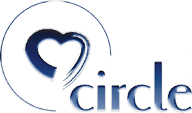
ESC Congress in Madrid
3. August 2025
ESC Congress in Madrid
3. August 2025Deepening Your CMR Expertise – From Dedicated Courses to the Future of Quantitative Perfusion
In cardiac magnetic resonance imaging (CMR), clinical excellence depends on continuous learning. As new techniques and recommendations emerge, the ability to deepen knowledge in specific areas becomes increasingly important. Many clinicians today already perform CMR in daily practice, yet seek opportunities to refine their expertise in particular disease settings or advanced imaging methods.
At Circle Institute, our mission is to support this development through structured, focused, and practice-oriented training. Beyond our established programs, we now offer dedicated advanced courses designed to strengthen your skills exactly where you need them.
Our IMPS Course provides a comprehensive framework for diagnosing inflammatory myocardial disease – from patient selection and scan preparation to image interpretation and awareness of technical pitfalls. Middle next year, we will continue with our Perfusion CMR Course, guiding participants from the fundamentals of stress perfusion imaging to the implementation of quantitative perfusion (qPERF) approaches. Both courses are complemented by interactive case training via our on-demand CMR-Orbit platform, allowing you to practice reading real-world CMR studies anytime, from anywhere.
Visual Perfusion Remains the Mainstay – Quantitative Perfusion Is on the Horizon
A timely development underlining the importance of such focused education is the recently released SCMR Expert Consensus on Quantitative Myocardial Perfusion (Chiribiri et al., JCMR, 2025). For the first time, this document provides unified recommendations for the standardization of quantitative perfusion imaging, including acquisition protocols, contrast dosing, and analytical workflows.
While visual perfusion assessment remains the cornerstone of clinical practice, the consensus highlights that quantitative perfusion analysis is steadily transitioning from research into clinical use. It defines key parameters such as spatial coverage, temporal resolution, and contrast dosing—laying the foundation for consistent implementation, quality assurance, and future regulatory approval.
At Circle Institute, we believe that understanding both visual and quantitative perfusion is crucial for the modern CMR reader. Our upcoming Perfusion Course 2025 is designed to bridge exactly this transition—providing a structured path from visual interpretation toward a deeper understanding of quantitative methods and their clinical applications.

